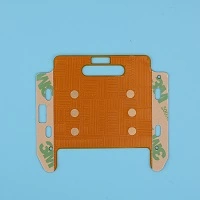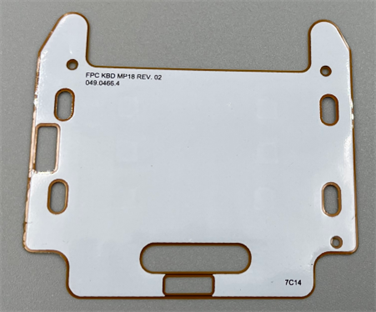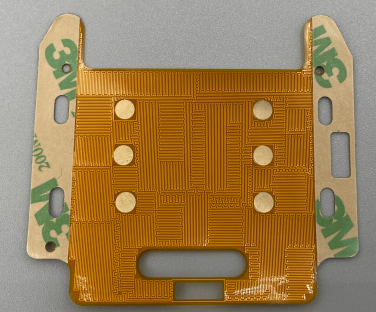Single Sided Flexible Printed Circuits
1 Layer Flexible Printed Circuit (FPC) Stack Up
For the normal flex circuit, there’ll always be an adhesive layer between Polyimide and copper, and the thickness is similar to Polyimide, so people will choose to “ignore” that layer and you will not see it most of time. But for better understanding, we will list it bellowing:

If you want a thinner thickness and more flexibility, then an adhesiveness base material will be your choice. There’s no adhesive /glue between copper and Polyimide, so the total FPC thickness will be thinner than the same FPC with the same copper and Polyimide thickness. See stack up bellowing: (0.11mm VS 0.13mm)

And the thinnest thickness of 1 layer flex circuit Best Technology can make is 0.06mm. See details:

There’s various stack up combination for 1 layer FPC, click to download the basic stack up of flexible circuits in Best Technology.
Normal Stack Up:
Adhesiveless Stack Up:
In normal stack up, adhesive layer will be hided so that customer can focused on other more important elements. Bellowing is two stack up /layer up and the only different is Coverlay material: One is Polyimide (the most popular one) and another is soldermask oil


(Solder mask Type - Single-Sided Flex PCB)
Manufacturing process:
For Single-Sided Flex PCB, here are the basic manufacturing processes following up IPC 6013 standard See more details, please check Flex Circuit Manufacturing














.png)
.png)
.png)
.png)
.png)
.png)

.png)

